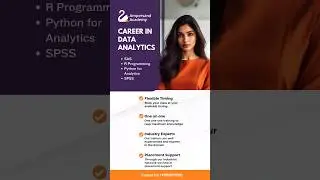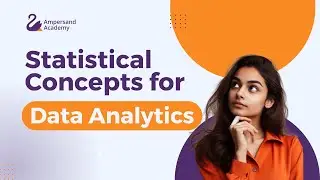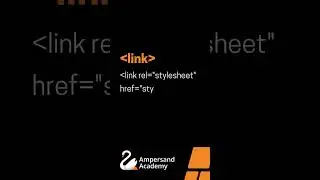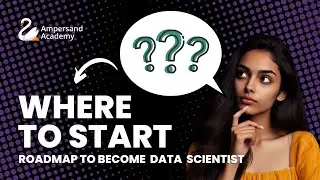Data Science Roadmap: A Comprehensive Guide in 2023
In this video we discuss about Data Science Roadmap.
Welcome to Ampersand Academy, your portal to the world of data science! In this comprehensive 5-minute video, we'll provide you with a detailed roadmap to embark on your journey as a data scientist. We'll offer practical guidelines, from where to begin, which statistics to learn, the choice between Python and R, understanding data analytics, the roles and responsibilities of a data scientist, where to find datasets for your projects, and how to apply for data science jobs. Stay tuned for valuable insights, and don't forget to hit that subscribe button for more enriching content!
Let's dive right in! Your quest to become a data scientist starts with a strong foundation in mathematics and statistics. It's crucial to grasp concepts like probability, hypothesis testing, and regression analysis.
As a data scientist, your primary programming language will be Python. It's the go-to choice for most professionals due to its versatility, ease of learning, and the extensive data science ecosystem it offers. However, it's beneficial to have familiarity with R, especially if you're interested in specialized statistical analysis.
Data analytics is the heart of data science. It involves extracting meaningful insights from historical data. You'll use tools like pandas and NumPy in Python to clean, transform, and visualize data. This step helps you decipher the narratives hidden within the numbers, a skill crucial for any data scientist.
Understanding the roles and responsibilities of a data scientist is vital. Your job is multifaceted, involving data collection, analysis, and interpretation to make informed business decisions. You may also be tasked with creating machine learning models to predict future trends or solve complex problems. Effective communication skills are key as you'll need to convey your findings to non-technical stakeholders.
Now, where can you find datasets for your projects? Online platforms like Kaggle, the UCI Machine Learning Repository, and data.gov are treasure troves of datasets across a multitude of domains, from healthcare to finance. These real-world datasets are excellent for hands-on practice and portfolio building.
Once you've honed your skills and built an impressive portfolio, it's time to start applying for data science jobs. Tailor your resume to emphasize your relevant experience, showcase your completed projects, and be prepared to discuss your accomplishments in interviews. Networking with other data scientists and attending industry events can also open doors to opportunities you might not find online.
In conclusion, the journey to becoming a data scientist is an exciting and fulfilling one. It requires dedication, continuous learning, and a passion for working with data. Start with a solid mathematical and statistical foundation, master Python (and perhaps R), delve into the world of data analytics, and explore the myriad of roles and responsibilities a data scientist can undertake. Practice on real-world datasets, stay engaged with the data science community, and don't forget to subscribe to Ampersand Academy for ongoing guidance and inspiration. Thanks for watching, and we wish you the best of luck on your data science adventure!































